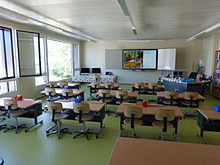
It can be a great way for kids to increase their confidence and excitement by practicing subtraction facts and strategies using games. For children, subtracting a number is not an easy task. It takes a concrete experience to be able to recognize the difference between two numbers. The best way to help children grasp this concept is through hands on activities.
Bowling, a classic classroom activity, helps students to visualize subtraction. Students can subtract from the pile by either counting back or adding up. Students can also add up units of time to see how many seconds it takes to finish the task.
Students in grades two and three can subtract two digits from three digits, or they can subtract two digits from a group of one digits. Students can also perform two-digit subtraction with regrouping. Subtracting using regrouping means dividing the tens into one.

Subtracting a number of tens from a number of hundreds is much easier than subtracting it. Students can practice subtracting groups of tens out of groups of hundreds by visualizing tens as bundles.
A game such as "A la pesca de 10", can be used to help students become familiar with the base ten numbering system. Students will see that tens make up groups of tens.
A classic classroom activity is the Subtraction Game. Students are given a selection of subtrahends. Then they must find the unknown miniend. The player chooses a minuend, and then clicks to subtract the subtrahend from the minuend. A score is awarded to the player for subtracting the minuends, and a score is assigned for subtrahends. Each card is kept if the player gets closer to zero. If they can't get to zero, they lose their cards.
Around the World is another classic classroom activity that uses flashcards to teach students the subtraction equation. The number of players will determine how many cards are used. There is a limited amount of cards in the beginning. The card count decreases as the game progresses. The game ends when there are no more cards.

Five Little Speckled Frogs is a great way for students to practice subtraction facts. These games are great for teaching children the concept of jumping by 1. They can use cardboard characters or finger puppets to perform the game. They can also study the subtraction principle with a Positive Family.
The Five Little Monkeys is another great song about subtraction. This game is fun for the whole family to play, and it will help kids build familiarity with the concept of jumping from one place to another. Although the number of players can vary, it works well for one or two students.
FAQ
Should I be a specialist or branch out in one area?
Many students prefer to focus on one subject, such as English, History, Math, rather than branching out into other subjects. But, you don't always have to specialize. If you are interested in becoming a doctor, you can choose to specialize either in internal medicine or surgery. You could also opt to become a general physician, specializing in either pediatrics, family practice or psychiatry. You could focus on sales, marketing, finance, research, and management if you are interested in a career in business. The choice is yours.
What's the difference between private and public schools?
All students are eligible to attend public schools for free. They offer education from kindergarten to high school. Private schools charge tuition fees per student. They provide education for students from pre-school through college.
There are charter schools that are both privately operated and publicly funded. Charter schools are not bound by traditional curricula. They allow students more freedom to discover what interests them.
Parents who believe that their children should be able to access quality education no matter what their financial situation are fond of charter schools.
What is the difference in school and college?
Schools are usually divided into classes (or grades), with a teacher who is responsible for teaching a specific class. Colleges are bigger organizations that offer more specialized courses and may include university-level courses. Colleges may focus more on business and science while schools will usually only teach basic subjects. Both levels of education are designed to prepare students for higher-level study.
What is homeschooling?
Homeschooling is a method of education where children learn at home from their parents. It can also be called homeschooling, self-education and private education.
For families who wish to educate their children at home, homeschooling is an excellent option. They can receive a high-quality education at home.
Children are educated by their parents from the time they are born until they reach high school. They decide on the subjects they want to study and how much time each subject should take. Each student learns all on their own.
Parents choose when to start teaching their children. Many schools recommend that children enroll in classes between the ages four and twelve. Some families wait until their children reach kindergarten to start teaching them.
Any number of resources can be used by parents to guide them through the curriculum. The lessons can be learned from videos, books and magazines as well as websites.
Many families find that homeschooling works well with their busy schedules. The parents can spend more time together than traditional public school teachers.
What is a vocational school?
Vocational schools offer programs for those who are interested in a particular occupation. They might also offer general education courses or training in the skills that employers require.
Because it helps young people to develop the skills that they need for success in life, vocational education is an integral part of society. It ensures all students have access high-quality learning opportunities.
A vocational school gives its students many options. This includes certificates, diplomas/degrees, apprenticeships, certificates as well college transfer programs and other postsecondary credentials. Vocational schools are able to teach both academic and vocational subjects such as maths, science, English, English, social studies and music.
Statistics
- They are also 25% more likely to graduate from high school and have higher math and reading scores, with fewer behavioral problems,” according to research at the University of Tennessee. (habitatbroward.org)
- “Children of homeowners are 116% more likely to graduate from college than children of renters of the same age, race, and income. (habitatbroward.org)
- And, within ten years of graduation, 44.1 percent of 1993 humanities graduates had written to public officials, compared to 30.1 percent of STEM majors. (bostonreview.net)
- Globally, in 2008, around 89% of children aged six to twelve were enrolled in primary education, and this proportion was rising. (en.wikipedia.org)
- Think of the rhetorical power of nineteenth-century abolitionist Harriet Beecher Stowe, Martin Luther King, Jr., or Occupy Wall Street activists with their rallying cry of “we are the 99 percent.” (bostonreview.net)
External Links
How To
Why homeschool?
When choosing whether to homeschool or send your child to school, there are several factors to consider.
-
What type of education do you want for your child? Are you looking to develop social skills or academic excellence?
-
What level of involvement do you desire to have in your child's education and learning? Do you prefer to stay informed about what your child is doing? Do you prefer to stay informed about what your child is doing?
-
Are there special needs that your child has? Do your children have special needs?
-
Is it possible to manage your child’s schedule? Can you commit to teaching your child at home every day?
-
What subjects are you going to cover? Math, science, language arts, art, music, history, geography, etc. ?
-
How much money do your parents have available for education?
-
Is your child old enough?
-
Where are you going to put your child? You will need to find a place large enough for your child's classroom and provide adequate facilities like bathrooms and kitchens.
-
What is your child’s age?
-
What time does your child go to sleep?
-
When does he/she wake-up?
-
How long does it take to get from point A to point B?
-
What distance is your child from school?
-
What is the distance between your home and your child's school?
-
How will you get your child from one place to another?
-
What are some of the benefits of homeschooling
-
What are the cons?
-
Who will watch your child while he/she's outside?
-
What are your expectations for your child?
-
What kind of discipline will you use?
-
What curriculum will your school use?
Homeschooling can be done for many reasons. Some of them include:
-
Your child is unable to attend traditional schools because of learning disabilities.
-
You wish to offer an alternative education to your child.
-
You want more flexibility with scheduling.
-
You don't want to pay high tuition fees.
-
Your child receives a better education than what he/she would get in a traditional school setting.
-
You believe you can teach your children better than any teacher in a traditional school setting.
-
You don't like the way the school system works.
-
You are not comfortable with the school's regulations.
-
You want your child develop a strong work ethic.
-
You want to give your child the freedom to choose what courses you take.
-
You want your child to receive individual attention.
Another benefit of homeschooling is:
-
You don't need to worry about supplies, uniforms, books or pencils.
-
You can personalize your child's education according his/her interest.
-
Parents can spend more time with their children when they homeschool.
-
Students who are homeschooled tend to learn more quickly than peers because they don't have to be distracted by their peers.
-
Homeschoolers are more likely to score higher on standardized testing.
-
Homeschooling families are generally happier.
-
Homeschoolers are less likely to drop out.